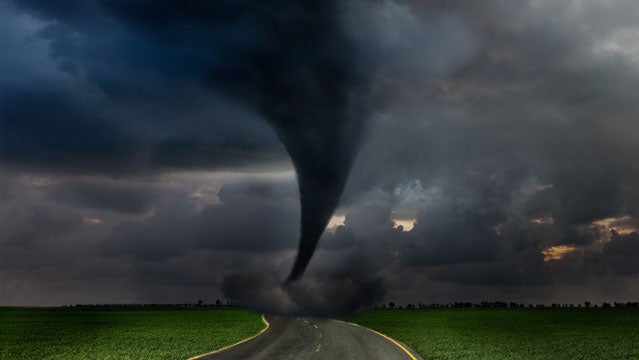THE FORECAST: In April 2011, the epicenter of activity shifted from Tornado Alley to the mid-South, where 875 tornadoes killed 336 people across six states and a 1.5-mile-wide funnel hit Tuscaloosa, Alabama. It was the busiest month for twisters in U.S. history. Then, in May 2011, a tornado in Joplin, Missouri, killed more than 140 people. The likely culprit? The tail end of La Niña, a cooling of the Pacific Ocean that redirects the jet stream over the U.S.
STATS: 69—total 2012 tornado deaths in the U.S. Compare to 525 deaths in 2011 and 794 deaths in 1925, the deadliest reported year in U.S. history.
WORST-CASE SCENARIO: Being caught outside. Seek shelter, preferably underground. If you’re on foot or riding a bike and can’t make it to shelter, get as low as possible—look for a ditch—and cover your head.
SMART PLAY: Wear a helmet. “People die by getting hit in the head with debris,” says Harold Brooks, a research meteorologist at the National Severe Storms Laboratory in Norman, Oklahoma. “We recommend a helmet even if you’re in a basement.”
SURVIVAL MYTH: Open windows can keep the roof from exploding in a tornado.
SCIENCE SAYS: Windows do shatter, but the pressure differential is only about 10 percent—not enough to pop the top. Either way, head for the basement. And put on a helmet.


